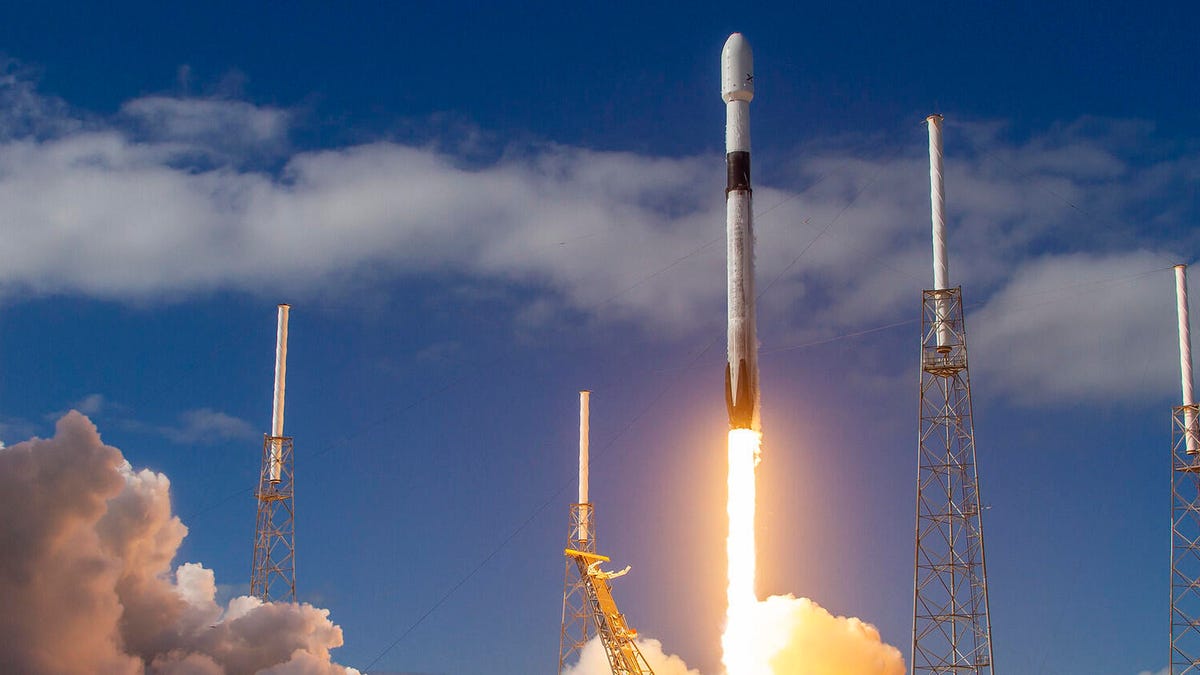SpaceX Starlink: How to watch Falcon 9 launch 60 satellites to space Monday
SpaceX attempts to go five for five with its Starlink satellite megaconstellation

The Falcon 9 launch in November 2019 carried 60 Starlink satellites.
It's time for another flying Falcon 9 to deliver a fifth batch of Starlink satellites to orbit for SpaceX . On Monday, SpaceX's workhorse rocket is set to add 60 more satellites to the burgeoning constellation. The satellite megaconstellation is designed to beam internet across the planet, but as more are sent into orbit, astronomers are worried they're changing the night sky and affecting their ability to study the cosmos.
Nevertheless, Elon Musk's pioneering spaceflight company is set to continue sending them up -- and the launch and return of a Falcon 9 is always a wonderful thing. If you want to watch the launch and landing live, here's how.
After a 24 hour delay, a Falcon 9, carrying 60 Starlink satellites will lift off from Cape Canaveral Air Force Station, Florida, at approximately 10:05 a.m. ET (7:05 a.m. PT) on Monday, Feb. 17.
Standing down from tomorrow’s Starlink launch; team is taking a closer look at a second stage valve component. Now targeting Monday, February 17.
— SpaceX (@SpaceX) February 15, 2020
It'll be the fourth launch this year for SpaceX, the fifth overall for Starlink and the fourth for this particular Falcon 9 rocket booster.
SpaceX carries a livestream on its webcast page for every launch, and this Starlink mission will be no different. You can watch the YouTube stream below, likely kicking off 15 minutes before launch at around 9:50 a.m. ET.
The mission will bring the total amount of Starlink satellites orbiting the Earth to around 300. That's still a drop in the cosmic pond compared with SpaceX's ambitions, which could see up to 12,000 Starlink satellites in orbit -- and perhaps even 30,000 more on top of that.
All those extra lights have the astronomy community worried the satellites might obscure their view of space, making it more difficult to study distant stars, planets and radio signals. In a previous mission, SpaceX launched an experimental Starlink satellite -- "DarkSat" -- with a coating meant to make it less reflective and obtrusive. However, the dark coating may cause the satellite to absorb more heat from the sun and ultimately malfunction, and it remains unclear if the approach can work.
Originally published Feb. 15
Update, Feb. 16: Adds launch delay until Monday, new time.

